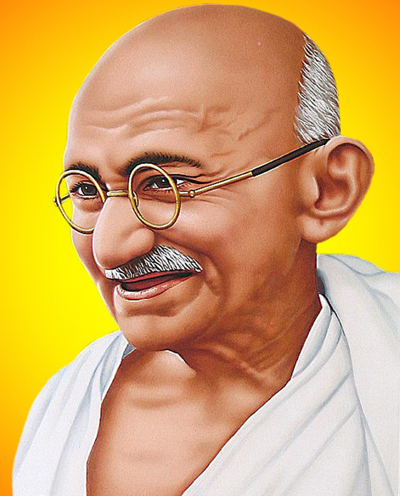Mehul Ahal
For Mahatma Gandhi, the notion of seeking truth and truth itself, was a radically different one. His views were that the modern idea of truth was actually just a correspondence to it, that is something that can be differentiated in the form of statements. But, for, him, truth was an actual state of affairs, more of a reality to be.
He said that the purpose of life was to find the truth. He supported this by the examples of the lives of other great thinkers that had lived in the past who had dedicated their entire lives to finding truth. Great people like Buddha, Mahavir, Kabir.
One of the fundamental truths he discovered, was that all living beings are the same. Therefore, harming any living being is practically harming oneself. So, one should not cause harm to anything.
He extended this notice of truth to preach non-violence, that he later termed as Ahimsa. During his stay, in South Africa, he was ardently fighting against the practice apartheid (racial discriminating against dark skinned people). He saw this as a struggle for truth (Sanskrit Satya) : as a struggle for upholding Satya, thereby holding on it. Hence, naming the movement Satyagraha (graham :clinging on to something).
Aim of satyagraha was to show oppressors, by principle of Ahinsa (logical consequence), that they were actually harming themselves.
This thought process touched Nelson Mandela and Martin Luther King Jr to such an extent that Mandela formed the Justice and Reconciliation commission after the overthrow of apartheid in S. Africa.
He provided another insight on Satya, in the form of essence of desires.He decreed that until people curb their desires, Satya cannot be found.
This can be brought out from the following example: an employee in a company has a desire to get promoted (everyone does). But when he/she sees the company doing something that doesn’t fit well by his/her conscience, he/she still doesn’t want to bring that matter up as it may result in his demotion rather than promotion.
So, as long as there is desire and even if truth lies in plain sight (the employee seeing the wrongs of his company), it would always obscure the truth. One is capable of seeking truth only when his/her desires are absent.
Therefore, one must try to be a master of one’s self. He expanded this idea to Independence movement in the form of Swaraj (self rule): Indians must be masters of themselves and not of the British. The idea grew to become one of political freedom.
He said that a few Britishers are able to rule over millions of Indian because Indians desire to be like them. So, to gain Swaraj, we must curb our desire to be like them in terms of language, clothing etc. This also gave a boost to the Swadeshi movement.
Lastly, he pointed out that the profound meaning of Satya is engrained in our language as its root is Sanskrit. He preached the a true civilisation is the one that helps its citizens to break away the bonds of desires and so, allows one to be master it over itself, truly. Hence, the modern civilisation is a not ‘true’ one as it creates distractions, and hard to ignore desires.
(The author is a class 11th student Rishi Valley School, Chittoor)
Trending Now
E-Paper


